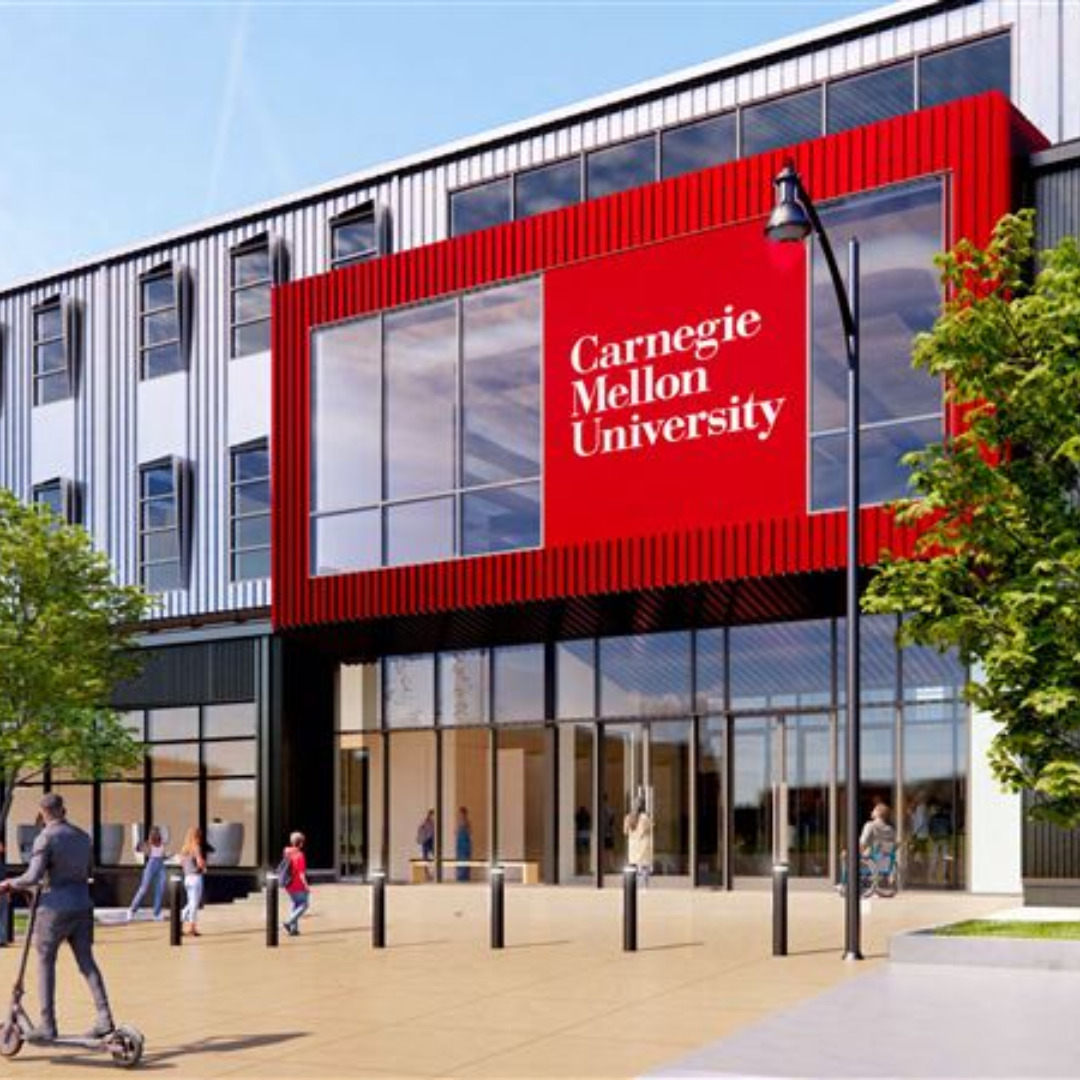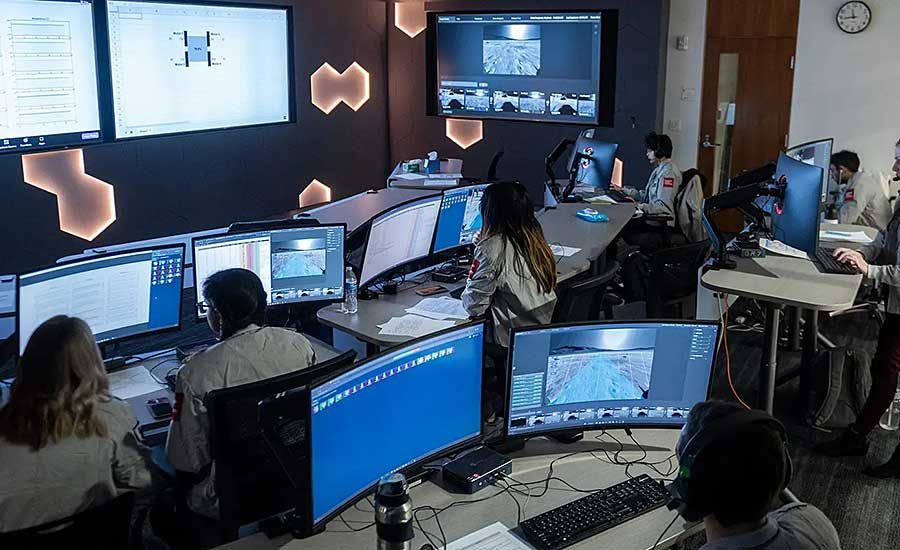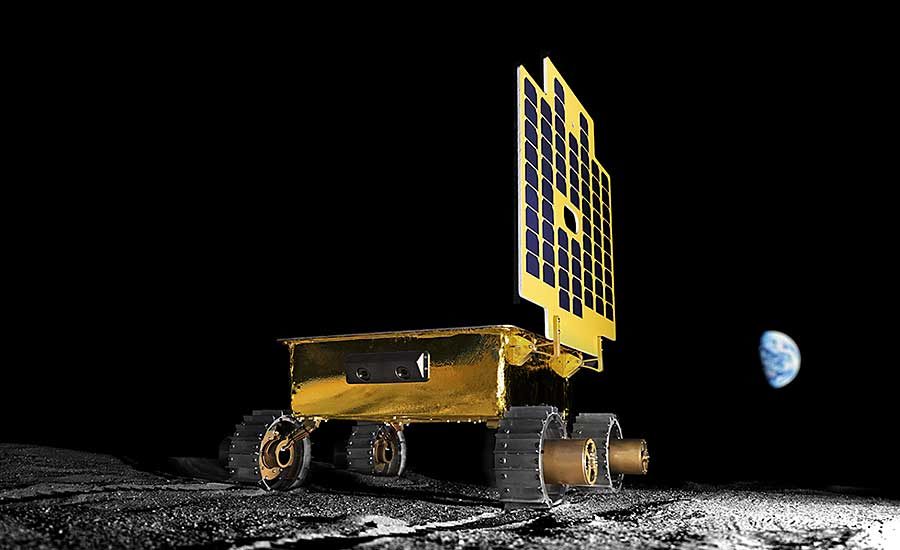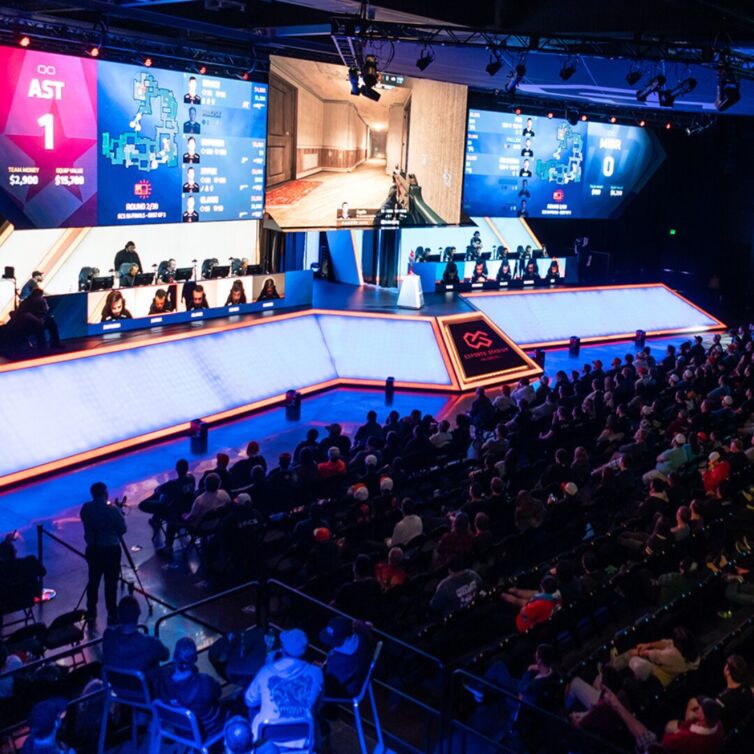Carnegie Mellon University: Robotics Innovation Center & Moonshot Mission Control Center Case Study
Exploring Carnegie Mellon University’s Continued Involvement in STEM Education and Research | May 6, 2024
Carnegie Mellon University is one of the leading research universities in the country.
This is shown through their endless engagements and investments into STEM education and research.
Exploring spaces like the Robotics Innovation Center and Moonshot Mission Control Center reveals their significant impact on STEM fields and showcases BrightTree Studios’ contribution to their creation.

Robotics Innovation Center
Carnegie Mellon University envisioned a center that is a place-maker while being accessible, visible, flexible, and community-based.
The Center will welcome and accommodate users, build an identity for the Hazelwood Green community, share Carnegie Mellon’s research process and outcomes, and design spaces that are flexible and have the infrastructure to enable long-term changes to spaces.
Located in a prominent public area adjacent to the Plaza and visible to the community of Hazelwood for public access, the center will include the local community while remaining flexible and adaptable to evolving needs.
The new 150,000GSF Robotics Innovation Center, with an additional 50,000GSF for future expansion, fosters collaborative research in robotics, integrating theoretical and practical applications.
The center will serve as a hub for cutting-edge research and innovation, attracting talent, inspiring future generations, and forging industry partnerships.
It will also feature shared spaces like a lobby, café, visitors’ center, childcare, workspace areas, and classrooms.
There will also be specialized research areas such as wet laboratories, damp laboratories, high and low bays, an indoor water tank, and an outdoor running room.
This will meet a critical need for outdoor testing space on campus, emulating a permanent construction worksite in a fully fenced area while supporting the development and testing of outdoor robots.
Carnegie Mellon University’s Moonshot Mission Control Center pioneers advancements in space exploration.

Moonshot Mission Control Center
Housed within the School of Computer Science’s Gates Center for Computer Science, this state-of-the-art command center is poised to revolutionize lunar missions by providing advanced equipment and support for the Iris, MoonRanger, and future space expeditions.
This control center is the first of its kind, making revolutionary leaps in their School of Computer Science and in the field itself.
Iris, the university’s groundbreaking creation, will make history as the smallest, first American, first university-built, and first student-built rover to go to the moon.
Accompanying Iris is MoonRanger, the pioneering rover tasked with the vital mission of seeking evidence of water at the moon’s south pole following its scheduled flight.
The adaptability of the control center ensures its readiness for upcoming space missions.
Equipped with cutting-edge operator workstations, crew members will have the tools to plan, direct, and monitor rover movements, all while maintaining seamless communication among team members.
Telemetry, localization data, and real-time diagnostics provided by the Fault List Evaluator for Ultimate Response will enhance operational efficiency, displayed on large screens visible to the entire team.
The flight director will control rover movements from a dedicated workstation, while a viewing room allows donors and spectators to witness lunar missions in action.
With an intercom system facilitating smooth communication between the viewing room and the control center, the entire operation is geared toward maximizing operator effectiveness.

The overarching goal of the Moonshot Mission Control Center is to optimize operator performance by providing intuitive data visualization and streamlined decision-making processes.
As Carnegie Mellon continues to push the boundaries of scientific discovery, the Moonshot Mission Control Center stands as a testament to its unwavering dedication to advancing human understanding of the cosmos.
This innovative space advances the university’s ambitions in space exploration and emphasizes its commitment to pioneering research and technological advancement.
Overall, Carnegie Mellon University’s commitment to innovation and advancement in STEM fields is exemplified by the establishment of the Robotics Innovation Center and the Moonshot Mission Control Center.
These state-of-the-art facilities showcase the university’s dedication to cutting-edge research and serve as pillars of inspiration for future generations.
The Robotics Innovation Center, with its focus on collaborative research in robotics, and the Moonshot Mission Control Center, pioneering advancements in space exploration, reinforce Carnegie Mellon University’s position as a leader in technological innovation.
For more on STEM education and research, check out our insight on the next generation of STEM innovators.




